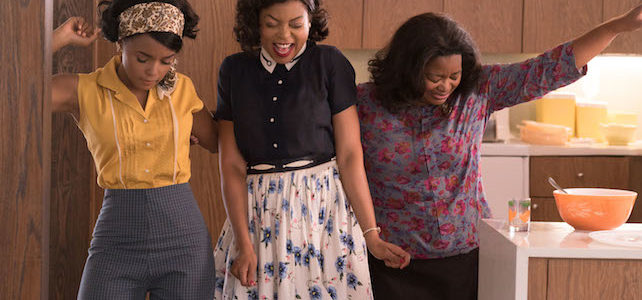
ReelBob: ‘Hidden Figures’
By Bob Bloom
“Hidden Figures” tells the true, but little-known story, of how a trio of women overcame racial and gender prejudice and inequality to help the United States reach the stars.
This movie should be promoted in every middle- and high-school classroom as part of a S.T.E.M. program to reaffirm the potential of any person no matter their background.
The film, which is set in the early 1960s in Langley, Va., follows mathematician Katherine G. Johnson (Taraji P. Henson), computer programmer Dorothy Vaughan (Octavia Spencer) and engineer Mary Jackson (Janelle Monáe) — all who worked for NASA — as they navigate and confront the social barriers they encountered as they tried to do their jobs.
The prejudice and indignities these women endured — and overcame — ranged from the petty — being addressed by their first names, while referring to their white supervisors as sir or Mrs. — to having a coffee pot marked “colored” or having to run to the other side of the NASA campus to use the colored-women’s restroom.
Yet, because of intellect and grit, these women persevered, helping the space program reach its potential and making sure astronauts, such as Alan Shepard, Gus Grissom and, especially, John Glenn, not only were launched into space, but returned safely.
As “Hidden Figures” progresses, you come to admire the three women more and more — not just for their minds and fortitude, but how they conduct themselves professionally and personally.
Henson’s Johnson is the focus of the film. Johnson is brilliant with numbers, grasping the complexities of the math associated with space travel and, at times, thinking out of the box to overcome problems that continually confront NASA scientists.
Spencer’s Vaughan fights for equality in a quiet but assertive manner that eventually pays off — not only for her — but for the other black women she supervises.
Monáe’s Jackson is a determined young woman who takes the state of Virginia to court so she can attend a “whites only” college to fulfill her dream of becoming an engineer.
Kevin Costner plays Al Harrison, the leader of the team of scientists tasked with getting the astronauts into space and home.
He is a colorblind individual whose main concern is the mission — not the race or gender of those performing the jobs at hand.
The movie has a couple of weak links. Jim Parsons and Kristen Dunst portray characters who are mostly one-dimensional and serve as the sounding boards for the era’s racial and gender politics.
Director Theodore Melfi, working from a screenplay by himself and Allison Schroeder — from the book by Margot Lee Shetterly — creates an atmosphere in which Johnson, Vaughan and Jackson must be twice as good as those around them simply to succeed.
Melfi captures the social and cultural aspects of the times perfectly, especially the fears about the Soviet Union conquering space ahead of the United States and the threat that might mean to the nation.
I enjoy movies that shed a light on moments of history that have gone unnoticed, and “Hidden Figures” fits that niche perfectly.
It’s a movie that will not only entertain but enlighten — which is a potent and desirable cinematic combination.
Bob Bloom is a member of the Indiana Film Journalists Association. His reviews appear at ReelBob (reelbob.com) and Rottentomatoes (www.rottentomatoes.com). He also reviews Blu-rays and DVDs. He can be reached by email at bobbloomjc@gmail.com or on Twitter @ReelBobBloom.
HIDDEN FIGURES
3½ stars out of 4
(PG), mature themes, language